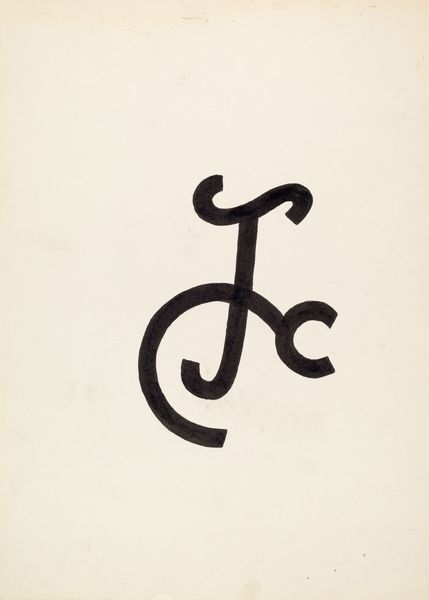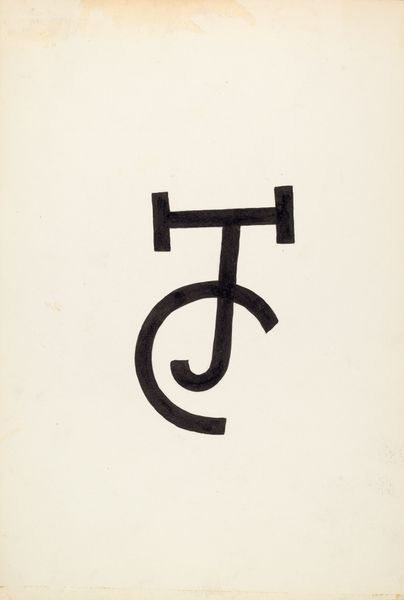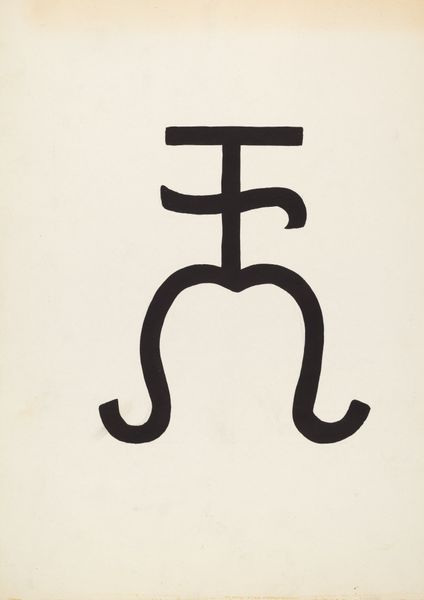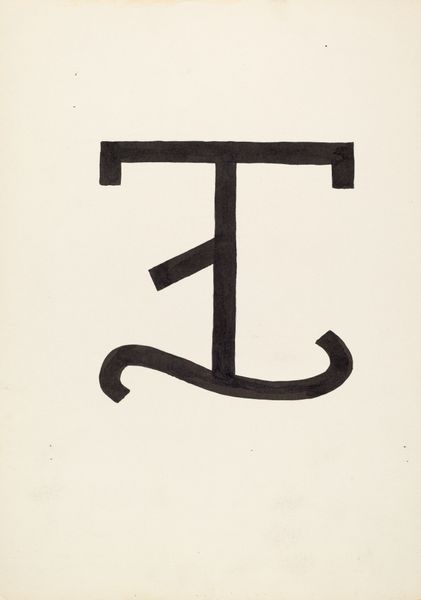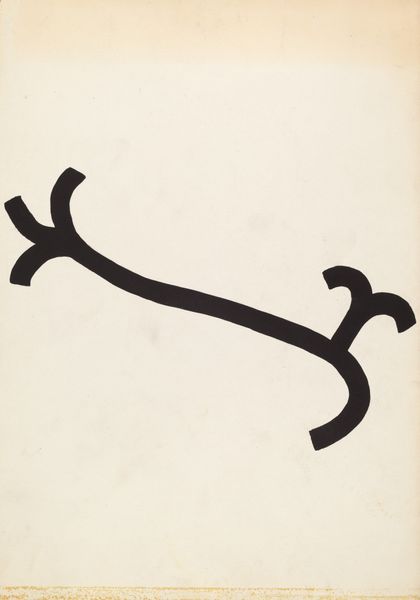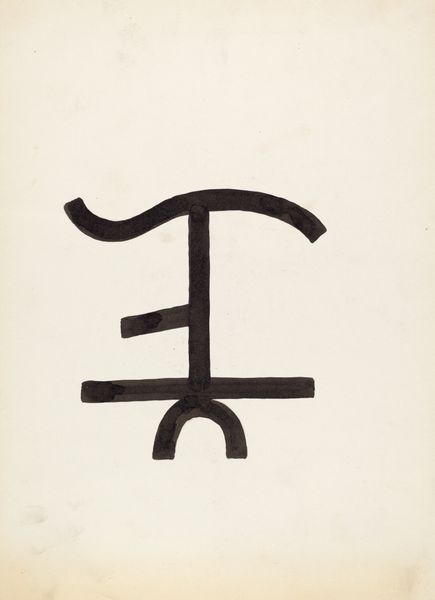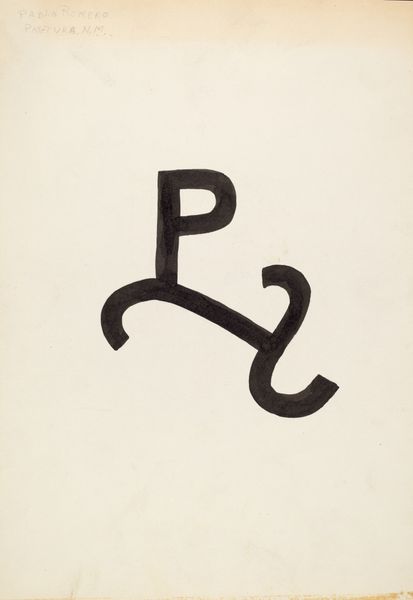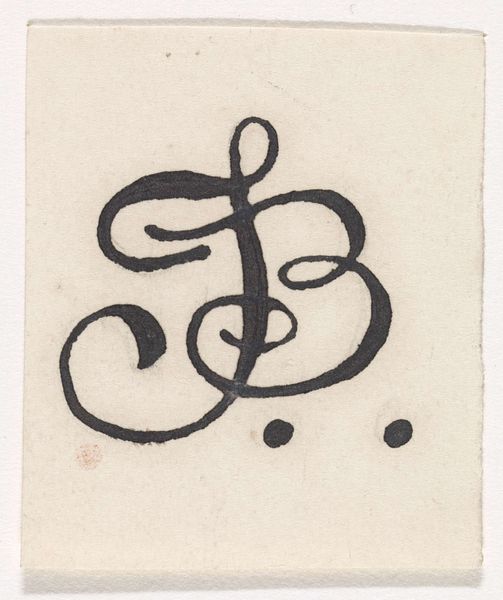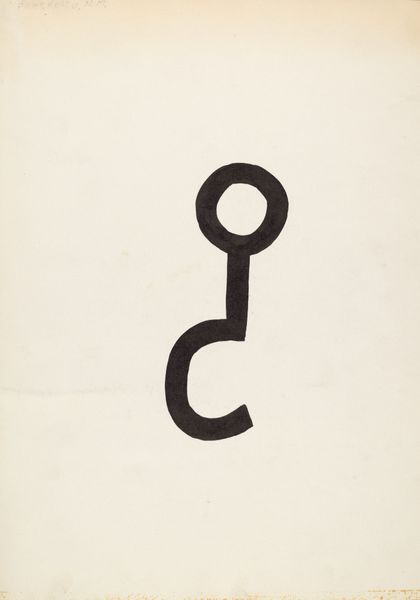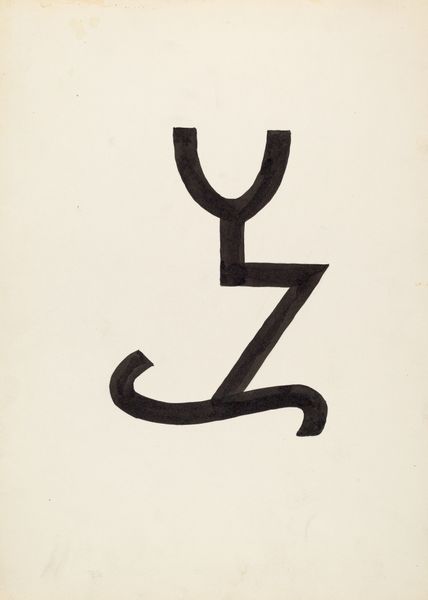
drawing, graphic-art, typography
#
drawing
#
graphic-art
#
script typography
#
hand-lettering
#
hand drawn type
#
typography
#
hand lettering
#
typography
#
hand-drawn typeface
#
fading type
#
geometric
#
thick font
#
typography style
#
experimental typography
Dimensions: overall: 34.5 x 23.7 cm (13 9/16 x 9 5/16 in.)
Copyright: National Gallery of Art: CC0 1.0
Editor: Here we have J. Henry Marley’s "Cattle Brand," made around 1936. It seems so simple, just thick black lines on paper. What strikes me is how this shape feels both abstract and deeply referential. What do you see in this piece, and how would you interpret it? Curator: What I see here is an attempt to encapsulate identity, not just of a rancher, but of an entire era. These brands were more than just ownership marks; they were symbols of family heritage, hard-won territory, and a distinct way of life. They represented security and loss. Notice how the interwoven letters are nearly indecipherable. Editor: I do see how they represent a historical time and place, with cultural connotations and value. It seems the branding is both a design and a cultural statement. Curator: Precisely! And the weight of that statement! Imagine the permanence of a brand seared onto skin. Consider how such a brutal act creates an undeniable mark. A brand asserts control, yet also testifies to vulnerability, a fascinating duality when it’s considered this deeply. What emotions rise when you think of that process? Editor: It definitely feels primal. I hadn't considered that. Curator: And think about how that mark becomes a logo, a symbol repeated endlessly. In that repetition, it carries memory, intention and even authority. And that act creates an association. Now consider that cattle branding has changed little over centuries. Editor: So much information conveyed through what looks like a very straightforward design. Thank you for the history and cultural implications, fascinating! Curator: Indeed! Thinking about this work reminds us that simple symbols can carry profoundly complex narratives.
Comments
No comments
Be the first to comment and join the conversation on the ultimate creative platform.
